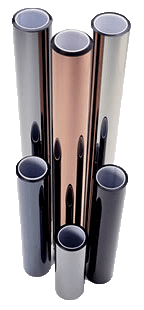 Window film is a thin coating that’s often applied to the inner side of windows in homes, cars and boats.
Window film is a thin coating that’s often applied to the inner side of windows in homes, cars and boats.
One of the main advantages of retrofitting your home’s windows with window tint is glare reduction and the retention of heat in the colder, winter months and the retention of cool air in the warmer, summer months.
Window Film and Energy Savings
It’s estimated that two-thirds of AC and heating expenses are squandered by poorly insulated windows. If you don’t have a window film currently in your home, chances are you’re watching your utility expenses shoot out the window.
The US Department of Energy even says that taking energy-saving steps like caulking and applying window tint can result in hundreds of dollars in energy savings annually.
In a 2011 study, the US Department of Energy also found that in 50 commercial buildings one of the quickest and surest ways of saving money on energy savings was to apply window film.
In fact, window film received a “top-tier technology” rating by the US Department of Energy for its cost-effectiveness and efficiency at keeping heat out and cool air in.
Glare Reduction and Privacy
A window film is relatively easy to install and often comes with a self-adhesive to adhere to your windows.
After you apply a window film to your home’s windows you can expect to reap a few benefits. Window film allows in enough ambient light to keep your living room looking vibrant while reducing undesirable glare.
Window film can reduce the kind of glare that makes watching television or working on a computer monitor more difficult than it needs to be. Window film cuts down glare while reducing the amount of harmful UV radiation that gets into your home. In fact, window film can reduce the amount of UV rays by over 80 percent.
A window film with a tint can allow in filtered light yet allow you and your family the privacy you require. Window film with a soft tint is really perfect for bathrooms or bedrooms because it blocks UV rays and cuts down on glare while allowing in some filtered light.
As an added benefit, window tint can make your window look more like stained glass. This upscale appearance belies the fact that the window tint was DIY, installed on a budget and over the course of less than an hour!
Drawbacks to Window Film
Many of the benefits of window film can actually be seen as detriments to certain people or in certain homes.
Because window films significantly reduce UV rays, glare and heat from the sun by 98 percent or more, some people complain that window tint results in needing to spend more on heating during the winter months. In some respects window film could be increasing your heating bills from September to March if you’re not careful.
Another demerit against some window films is that the privacy and filtering that they provide isn’t as effective and fool-proof during the nighttime. Why? Because lighting in your home coming from LED or incandescent bulbs takes the place of the sun and cuts down on some of the privacy advantages of window tint.
Weighing Pros and Cons
Overall, the benefits of applying window tint far outweigh the drawbacks.
Window tint can help reduce your utility bills by improving your window’s insulation and reducing the amount of AC and heating that you need at different points during the year.
Window film is a cost-efficient way to reduce glare and harmful UV rays in your home.
Looking for window tinting for your home or office? Consider regularlink.com members Daystar Window Tinting.